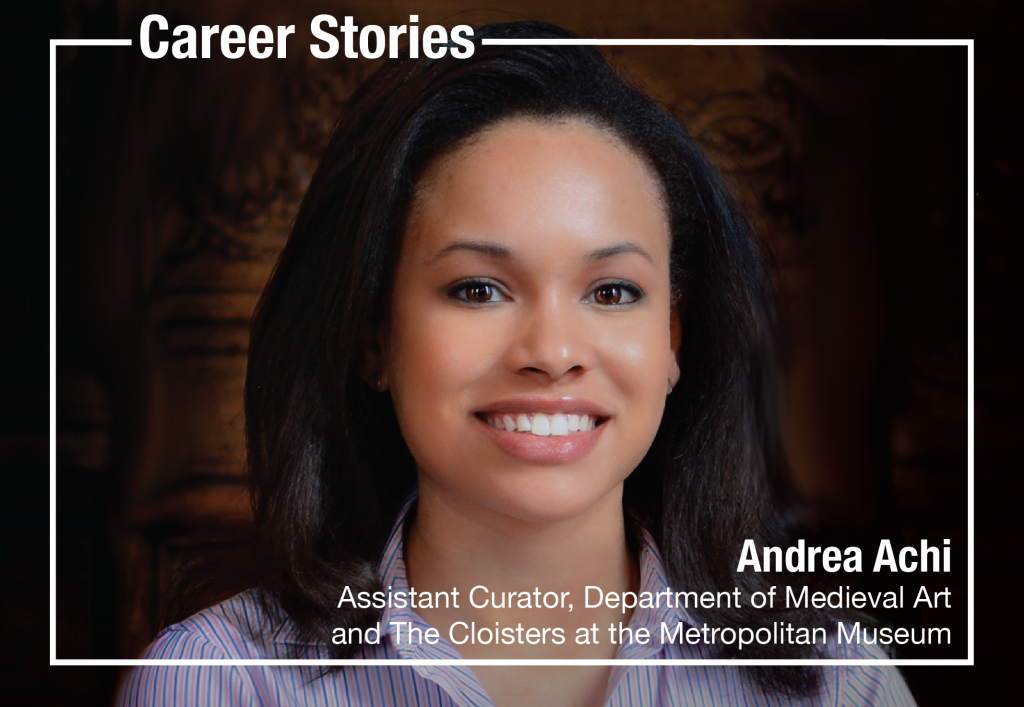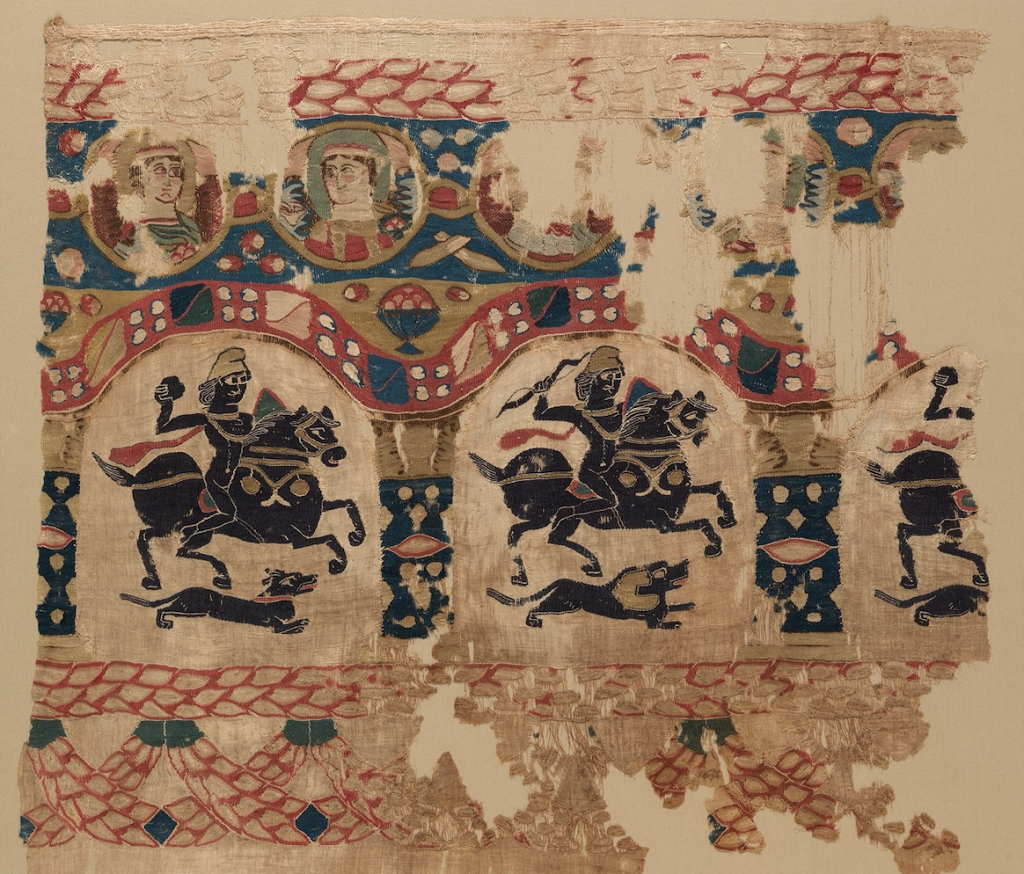Career Stories
Metropolitan Museum Curator Andrea Achi on Excavating Art in Pompeii and the Secrets That Medieval Art Can Uncover
The curator tells us about her path into the art world.

The curator tells us about her path into the art world.

Katie Rothstein

No two paths to a successful career in the art world look the same. In our series, “Career Stories,” we’re checking in with some of the high-powered people in the art industry to hear about everything from their first brushes with art, to the advice they would give their younger selves.
Andrea Achi did not always know she wanted to be a curator. “I assumed that I would become a professor and teach art history at a college, ideally at an HBCU [Historically Black College and University] because I am passionate about opening pipelines into academia and the art world,” she said.
But after interning at the Metropolitan Museum of Art while earning her doctorate, she had an epiphany.
“For the first time, I realized that my academic training gave me the tools to present new narratives about the ancient world in a museum setting,” she said. “Through curatorial work, I saw that I would reach a broader, more diverse audience.”
Now serving as an assistant curator in the Medieval art department the Met, Achi gets to work with some of the rarest objects in the institution’s collection.
Read on to learn about some of her first experiences with art, her most memorable excavations, and the best advice she’s ever received.
What was your first experience with an ancient object, and what first drew you to the study of antiquity?
That is a great question, and I think a lot about “points of entry” as I reflect on diversity issues in the art world and art history—particularly in the pre-modern fields. There are two formative moments in my life that I consider as first experiences.
First, my grandmother, Marion Rieras Myers, was a Classics major at Xavier University. She would often tell me about famous Black people who studied classics: for example, W.E.B. Dubois took four years of Latin and three of Greek in high school. Many HBCUs once had strong Classics programs. I sort of followed in her footsteps, in many respects, and started Latin in middle school. Translating texts together was one way we bonded. Those early experiences made the ancient world very familiar and comforting for me.
Second, in my senior year at Barnard, I participated in an excavation in Egypt. I completely fell in love with being out on the field. I remember the director of the site, Roger Bagnall, translating ostraka (pottery with written texts) right as they came out of the ground. Through those translations, he started to reconstruct the lives of the people who originally lived in that area. I learned how to record the archaeological materials on site, the pottery, animal bones, bits of wall paintings. I was fascinated by how the study of these fragmentary objects and texts led to exhilarating discoveries. I continued to work at that site, every season, for a couple of years.

Seventy-nine pit graves in Bagawat Necropolis, Kharga Oasis, 1907–8. Andrea co-curated the institution’s current exhibition, Art and Peoples of the Kharga Oasis, that explores artifacts from this region. Photography by the Egyptian Expedition, The Metropolitan Museum of Art, New York.
We heard that you used to participate in yearly archeological excavations in Egypt. What was the most memorable experience you have had? We read that you got stuck there during the revolution in 2011!
Ah, yes, being stuck in Cairo during the revolution was certainly memorable! I loved going on yearly excavations in Egypt, but one of my most memorable experiences was on an excavation in Pompeii. During lunch breaks, I explored the streets and houses of the ancient site. I would search for quiet spots and just be overwhelmed by the beauty of the place. I spent my formative years in South Carolina, and as a little girl, I could never have imagined for myself a job where I would be able to meander around Pompeii on my lunch break. That experience still feels like a dream.
Tell us about the exhibition you co-curated, “Art and Peoples of the Kharga Oasis.” The description says that the objects are organized in the context they were discovered in, noting that “archaeological documentation can assist in understanding an object’s original function.” What made you decide to group this collection of objects in this way, and how do you think it contributes to the visitor experience?
“Art and Peoples” is about a community in Egypt during the late antique period (4th–7th century AD). This community was multicultural—a mix of Roman soldiers, merchants from trade routes south of Egypt, Nubians, Egyptians, and likely others from different areas of the Mediterranean world. The exhibition features daily life items from this community, such as pottery, clothes, modest jewelry, and painted wood. These archaeological objects are not considered “masterpieces” in the canonical sense of the term. Still, together, grouped in their original contexts, they tell a dynamic story about how they were used and about the people who used them. Visitors must understand these works did not just fall from the sky into a glass case in a museum—these objects had long, complicated lives. Without their context, these mundane objects can appear to be dull fragments. I hope by grouping the objects by context, the visitor can understand why this material is so important.
As someone who studies the ancient past, what do you think it can tell us about how we live today?
So many of the issues we are addressing today: wealth gaps, inequality, ethnic disparities, and pandemics (!) all were prevalent in the late antique period as well. However, I am optimistic that we were giving ourselves the tools to tackle these issues for a better, more just future.

Detail shot of a Coptic textile that Andrea recently studied. Image courtesy of the Metropolitan Museum of Art.
We read that you focused your doctorate studies on a collection of intricately decorated ancient Egyptian manuscripts. What is something surprising about medieval book production that you learned while working on your dissertation?
Parchment books were time-consuming to make! They required so many materials and accumulation of resources: animal skins, pigments, source texts, skilled people to copy and illuminate the text. One book could have used over 30 goatskins. In our mass-production culture, we sometimes forget about the time and effort that went into making a single object.
What are some of your favorite ancient artifacts in the Met’s collection? Any shocking discoveries or objects with interesting stories?
Too many to list! But, lately, I’ve been thinking a lot about the presence and experiences of Black Africans in North Africa during the late antique period. Recently, I wrote a short essay about Black mounted riders on a Coptic textile. As I was researching the work, it was shocking that many scholars completely ignored the monochrome Blackness of the central figures. It is clear that so much more work needs to be done on this topic!
Do you have a mentor?
Yes, I have been fortunate to have incredibly generous mentors at pivotal points in my career. For example, the director of my first excavation in Egypt (Roger Bagnall) and my first internship supervisor (Helen Evans) are still my mentors. My dissertation advisor, Thelma Thomas, is my mentor. She was the first Black American to earn her Ph.D. in Art History from the Institute of Fine Arts, New York University. When I was a junior at Barnard, I remember seeing a picture of her online—I think it was a press release or lecture announcement. I felt so encouraged knowing that a Black woman had a doctorate in a field related to some of the topics I was studying as an ancient studies major. At the time, I would not have guessed that I would become the second Black American to earn a doctorate from that same program, which was founded in 1932.
What is the best piece of advice you have ever received?
Your first idea is usually your best idea.